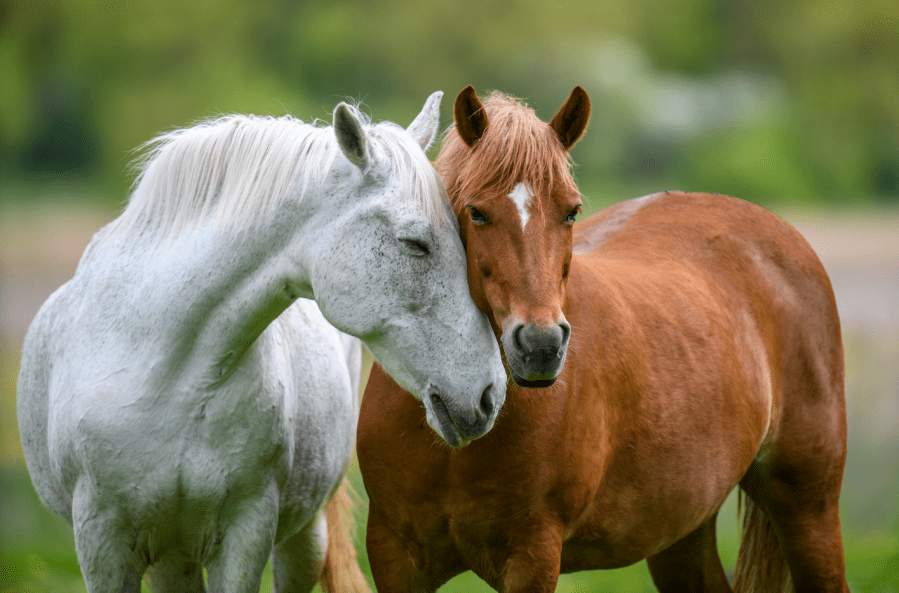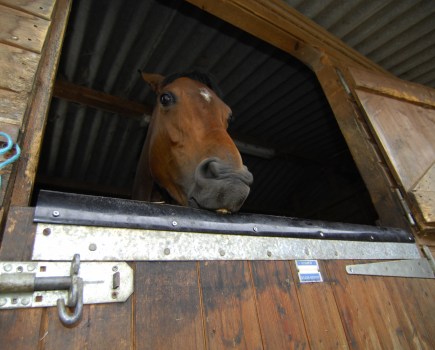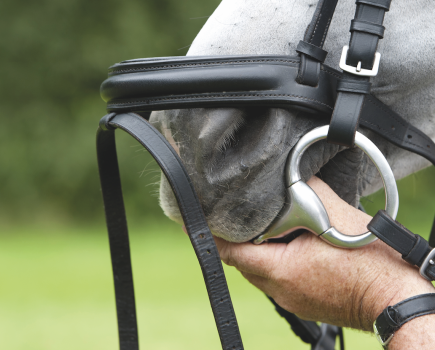Wellness is a term commonly used to express a healthy state of being and it is something that every horse owner around the world should strive towards. When it comes to understanding how to take care of a horse or pony, ensuring that they are as happy, healthy, content and as well as they can be should be the priority.
Even if you are the sole owner of a horse, managing their care and welfare is a team affair. At the very least, you will work with a vet and a farrier. Most horse owners will also consult regularly with a physiotherapist, equine dental technician, nutritionist and possibly a riding instructor, insurance company and other industry experts. Your livery yard manager and/or landowner, if applicable, also play a key role in how to take care of a horse because their actions, choices and decisions affect your horse’s welfare.
Wellness is the optimum expression and fitness of a horse and it is determined largely by the horse’s environment. “It is experienced and expressed outwardly through the horse’s actions (or non-actions), behaviour, interactions and inwardly through physiological functions,” explains wellness and resilience coach Beccy Smith, who is CEO of Holistic Equine.
How to take care of a horse: vet advice
When assessing a horse’s health, equine vet Sophie Hill, who is a qualified teacher and practises holistic medicine, likes to look at the whole horse — emotionally, physically and mentally. She offers the following advice for common issues she sees as a vet:
1 Manage your horse’s weight
Equine obesity is a major welfare issue because a lot of the pasture horses are kept on isn’t suitable for them. Horses have evolved over thousands of years to eat sparse, low-quality nutrition and now the fields that horses graze are often former dairy pasture which is designed to put weight on an animal quickly and meet high metabolic needs, such as in the case of dairy cows. We then restrict the grazing area to give horses less grass, resulting in them moving less.
Keeping your horse a healthy weight via a suitable diet and a suitable workload to prevent debilitating illnesses such as equine metabolic syndrome and laminitis, plus managing them naturally (such as strip grazing and track systems) are vital.
2 Allow your horse to socialise
The importance of socialisation is well regarded in dogs, but it can get forgotten in horses, who are naturally herd animals and don’t tend to do well living in isolation. Sadly, many horses today don’t know how to socialise with others due to the lack of mixing with other equines when they’re foals and young horses. Poor weaning practices are also factors.
If horses experience a lot of stress from early weaning and they aren’t socialised at this point in their lives, it can then become difficult for them to react appropriately to other horses when they reach adulthood. Increasing awareness of this is important because it does have an impact over a horse’s lifetime. Seeking advice from an equine behaviourist can help.
3 Support the horse’s microbiome
A horse’s microbiome plays a vital role in their overall health. Owners are becoming increasingly aware of how the microbiome impacts health and susceptibility to disease, and that’s why there is growing popularity in self-selection of various plants and herbs and essential oils to promote wellness. Allowing your horse to browse hedgerows as they walk in from the field, or taking them for in-hand walks to graze verges, will give them access to plants and herbs that they don’t have in their paddocks.
4 Consider your horse’s mental health
There is much better awareness about the importance of a rider’s mental health nowadays, which is fantastic, and your horse’s mental health is important too. Horses aren’t designed to spend hours isolated in a small stable, so consider how you can improve their environment so that they also have access to friends and movement, as well as food at all times. Cafeteria feeding is a good way of achieving this. Give your horse choice and autonomy over their routine and environment so that they stay mentally well.
5 Implement a testing-led worming schedule
Horse worms are becoming more and more resistant to some chemical wormers, so it’s vital that horses are routinely checked for worm eggs before being wormed with a chemical wormer. Bear in mind that 80% of worms are in just 20% of horses, so testing for worms and not routinely using wormers is one way to massively cut down resistance. There are other tests apart from worm egg counts, such as a saliva test for tapeworm and a blood test for encysted small redworm. How you manage your horse’s field is hugely influential in preventing a worm burden too.
How to take care of a horse: seasonal influences
How to take care of a horse varies from season to season. The way horses live, are ridden and potential health concerns that become a threat vary considerably from summer to winter, for example, while there is different advice for how to take care of a horse in the spring and autumn too.
According to Beccy Smith, a horse’s wellness has the opportunity to flourish when the following conditions are met/provided:
- Optimum conditions for expression of natural behaviour.
- An ideal diet.
- The horse can live in harmony with the rhythms of the seasons. “This translates to lots of movement, herd life, and the opportunity to seek food and water according to the seasons and the needs of the individual,” says Beccy.
To achieve this all-year round, the following advice applies:
Feed your horse like a horse
“This might seem like common sense, but somewhere along the way grass has become too rich, the soil less fertile, the hedges too neat and ancient species of bushes, herbs and grasses have diminished,” states Beccy.
Consider what you feed your horse, when and how, according to their weight and workload. Hay and pasture can be tested for nutrients and the horse’s diet can be supplemented with minerals, vitamins, protein and oils if required, to ensure it is a balanced diet.
Clip and rug according to your horse’s needs — not yours
Remember, just because you feel cold doesn’t mean your horse does and so it is not always necessary to throw on a rug when the temperatures drop or it starts to rain. Only clip off the hair that is necessary to keep your horse comfortable for the amount of work you’ll be doing in winter.
Check the horse’s tack fits and is suitable
Invest in the advice of a qualified saddle and bridle fitter to make sure the gear you use on your horse is a good, comfortable fit. Consider the choice of bit, seeking advice from a riding instructor if necessary, and make sure the use of horse boots and training aids is done correctly.
Employ a vet, farrier and equine dental technician
Make sure regular appointments with all three are in your diary and that you keep your appointments. These people are essential for providing quality hoof care, teeth care and general good health — three vital factors in how to take care of a horse.
Let your horse move
The less a horse is in the stable, and the more time they spend in a field (or some sort of all-weather turnout area if fields are too wet or muddy), the better it is for their overall health and wellbeing. Of course this might not always be possible due to the weather, the horse’s age, health reasons or the need for box rest, in which case do everything you can to enrich your horse’s environment. Horses are happiest turned out with other horses for company, but if individual turnout is the only option, allowing them to touch and nuzzle other horses over the fence is better than nothing.
Main image credit: Shutterstock
Love hacking? Join our free #Hack1000Miles challenge and see how far you can go!
Subscribe to Your Horse Magazine – the perfect Christmas gift!









